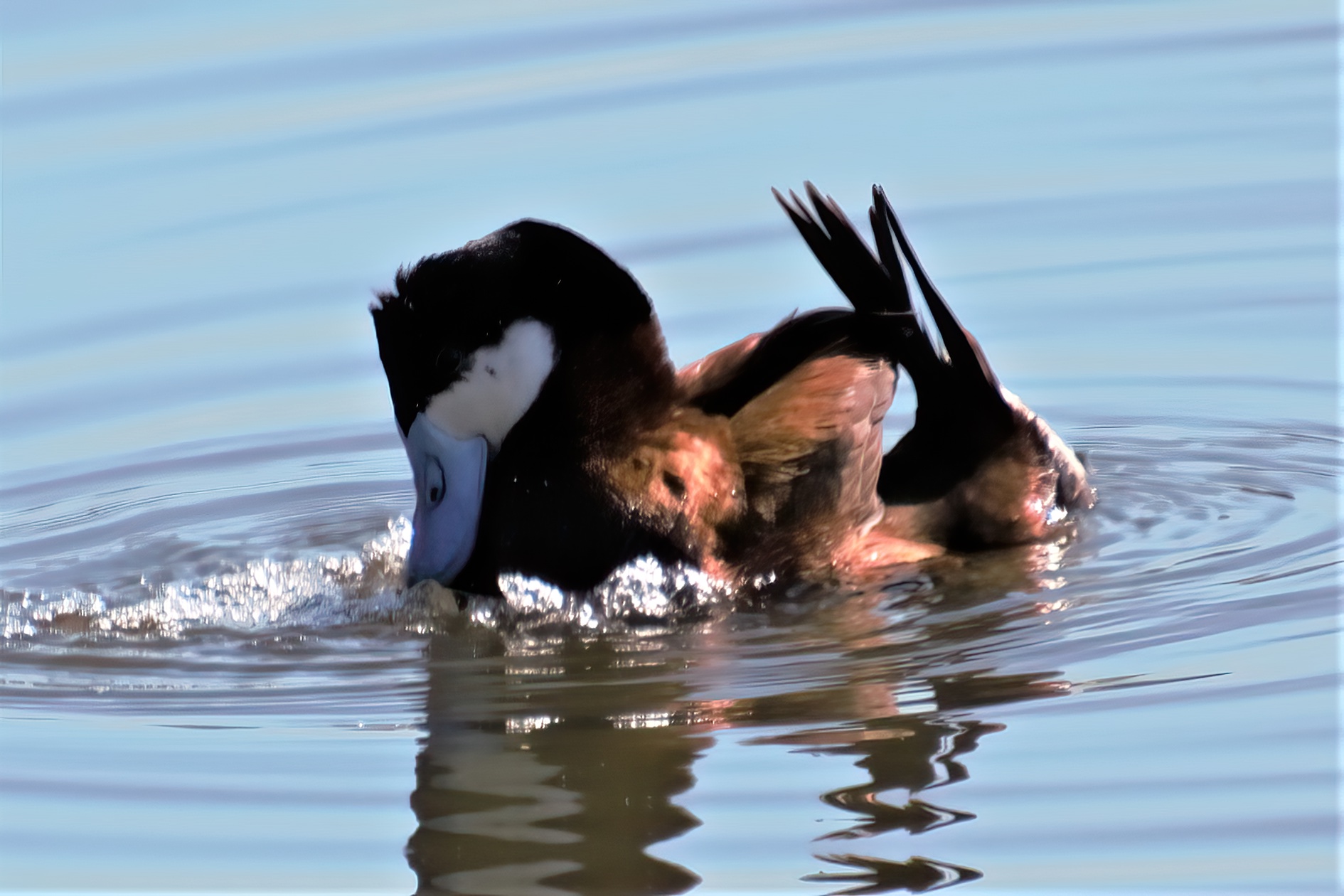Although I love looking for tiny birds to photograph, there are times of the year, especially in May and June, that Alberta’s ducks prove to be irresistible. A benefit of living in Chestermere is having not only the lake but also small storm ponds that dot the community to explore. Both water body types provide food, shelter and homes for each generation of waterfowl. With nearly two dozen species visiting our area during the year, bird watchers have much to quack about. With the arrival of spring, most species return to Canada. The males of virtually every species become the “supermodels” of the duck world. Enhancements in the form of feather color, courting behavior and testosterone-like aggression make duck-watching an engaging activity.
One petite duck that is a true attention-getter is the Ruddy Duck. Nicknamed the “blue-bill” by some old school hunters, watching the courtship routine of this 38 centimetre dynamo will make you smile. Imagine seeing a stout, thick-necked duck, sporting a sky-blue bill, white cheeks, a black cap atop the peaked head, a chestnut-hued body all ending with a black, stiff tail, seemingly always pointing upward. Females are more subtly coloured, predominantly a tawny, soft brown, a darker cap and a black bill.
This member of the diving-duck group has a most unique courtship routine that the male proudly puts on display. When near a potential female mate, the Ruddy Duck, with stiff tail up, and in overdrive motion, beats his blue bill so hard against its neck that air is forced through those neck feathers, creating a marvelous swirl of bubbles in the water. How a frothy mass of bubbles attracts a female duck I have absolutely no idea. To top things off, the bubbly ceremony ends with a clearly audible belch. Perhaps it is the belch that wins the heart of a possibly amorous female.
In watching Ruddies, their aggressive behavior is most notable when other males are in specific territory. The “offended” male will take a run at the invader, hoping to frighten it from approaching the desired female. Some birders have seen male Ruddy Ducks chase rabbits feeding on shorelines. Three species that will “submarine” our blue-bill are the Pied-Billed and the Horned Grebes, joining the American Coots in this unusual attack method. The Ruddy of course will retaliate creating a bit of a squabble on the water.
Laying proportionately the largest eggs to body size, Ruddy hatchlings need little care from the parents, being well-developed and active moments after birth. Joining the parents in the fall, the new generation of Ruddy Ducks complete relatively short distance migrations, leaving Canada to head for the southern United State, Mexico and Central America. Crystal Pond, located in the northwest corner of the dog park is an excellent spot to enjoy the antics of this tiny titan of the duck family. With the fall migration not that far away, take a moment in look for those bobbing blue-bills on the lake.
Ducking It On The Lake

In response to Canada's Online News Act and Meta (Facebook and Instagram) removing access to Canada's local news from their platforms, Anchor Media Inc encourages you to get your news directly from your trusted source by bookmarking this site and downloading the Rogue Radio App. Send your news tips, story ideas, pictures, and videos to info@anchormedia.ca.





